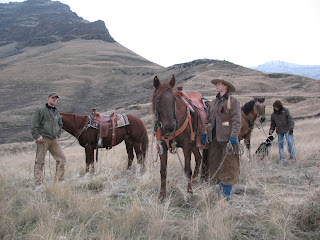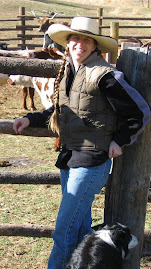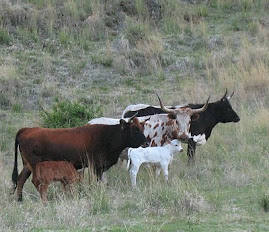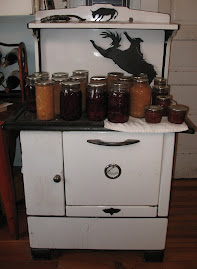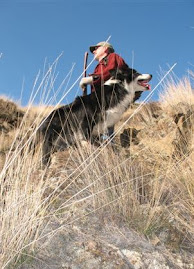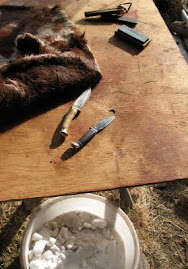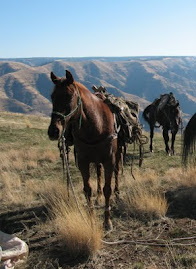 |
| Above the Rye Bench, looking north |
The three of us, Mike, Zeke and I, gathered the last of the herd out of Pumpkin Creek this week and trailed them to the river.
 |
| Old rock flume at Pumpkin Creek |
We gathered on foot, crossing Horse Creek on a slippery downed alder tree just below the cabin, and climbing high into Pile-Up where I’d spotted about nine head on a narrow strip of grass between the north rims.
The norths were thawed in places, with steep patches of greasy mud that stuck to my boots. I was glad for my staff. We threaded a little bunch of cattle off the narrow end of the ridge between rock outcrops and switchbacked down to the drift fence. They wanted to grade out but we managed to hold them.
Once through the gate, they took off in a wild run crossing back into the draw and through the brush before galloping downslope all the way to the creek.
 |
| Down the Pumpkin Creek road |
The next day Mike and I rode and Zeke shuttled the truck over to pick us up at the river place. Our neighbor had driven up the creek that morning to tell us where he’d spotted some cattle, and to let us know he’d already cut a few of our stragglers out of his cows and put them through the gate. Nice.
We picked up another fifteen head trailing to the river. The weather held off for the five-mile ride and the cattle trailed willingly across the bench. Almost to gate on the Rye Bench, we reached the funky drift fence at Walking Cane, with its long weak stretches, rotted material and awkward corner gates.
 |
| Trailing north |
A bunch of the neighbor’s cows were scattered below on a finger of bench ground. Mike suspected our cows would go running over there as soon as they could get through the fence, so he rode ahead, off the slick side hill and onto the flat. Sure enough as soon as a big red steer found a hole, he high tailed it toward the flat with a string of cows behind him. Mike’s determination and some fancy footwork by Zip finally got the best of the steer and turned him back. When an old cow took the lead towards home, the rest of the bunch soon followed.
 |
| Mike brings west-side stragglers across the river |
 |
| Past the home place |
We reached the river, met up with Zeke, unloaded supplies and turned the horses out. Mike and Zeke drove up the road to Crazy Man to gather a few steers and heifers who climbed out of the river pasture earlier in the week. They trailed the tail end of the stragglers through the driveway gate just as the snow started to fall. The temperature was dropping fast and the wind was picking up. We ate the last of the pies, swallowed some hot coffee and headed for the valley.
Zeke drove us out to town, over the ice and snow and into a blizzard squall. We were wedged into the front seat with the heater cranked and the familiar smell of wet dogs wafting up behind us. Mike took a swig of water and summed it up, “Well, we accomplished everything.” It was a good way to end the year.
From Sara at Magpie Ranch, home of Bunchgrass Beef














